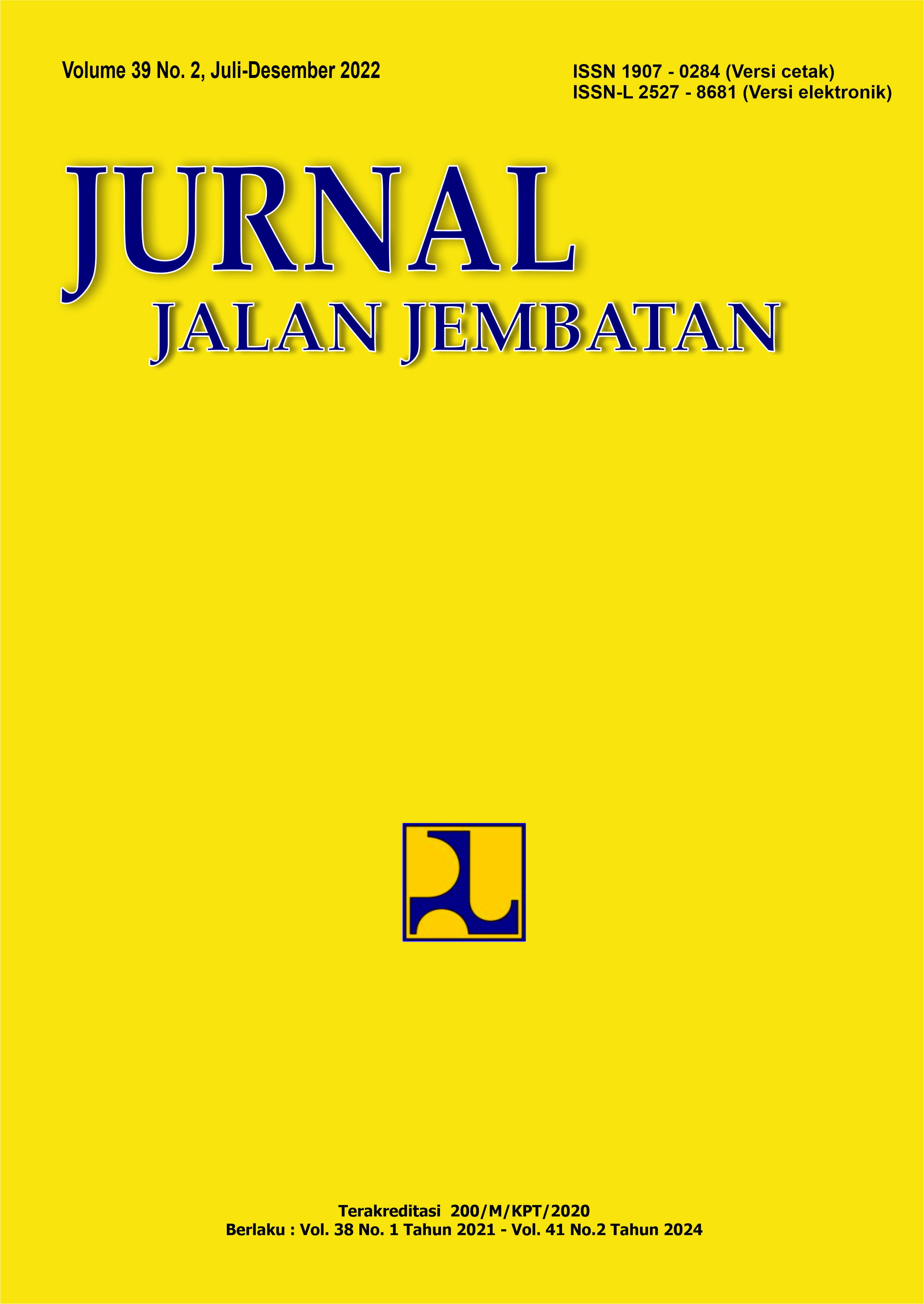ROCK MASS CHARACTERIZATION AND SLOPE STABILITY EVALUATION USING NUMERICAL METHODS ON PLANJAN–BARON–TEPUS
Main Article Content
Abstract
This research aims to evaluate the stability of the slope by considering the rock mass characterization. The research location was conducted on the Planjan–Baron–Tepus section at STA 7+000 to STA 9+725, with limestones dominating the lithology. The data collection method begins with determining rock mass quality based on rock mass classification using the Geological Strength Index (GSI) of limestone introduced by Marinos (2010). The results of testing the physical and mechanical properties of rocks and the quality of rock mass will be used as input parameters in the slope stability analysis. The results showed that the rock mass quality in the research area varied from "good" condition at STA 9+075, "fair" condition at STA 7+825, to "poor" condition at STA 8+475. Based on the slope stability analysis using the finite element method and the Generalized Hoek-Brown failure criteria, the result of the slope analysis at three locations representing the rock mass quality was a stable (safe) condition without seismic loads and with seismic loads.
Key words: slope stability, rock mass quality, geological strength index, limestone, finite element method.
Article Details
Authors who publish in this journal agree to the following terms:
-
Authors retain copyright and grant the journal the right of first publication with the work simultaneously licensed under a Creative Commons Attribution License, which allows others to share the work with acknowledgment of the work's authorship and initial publication in this journal.
-
Authors may enter into additional contractual arrangements for the non-exclusive distribution of the journal's published version of the work (e.g., post it to an institutional repository or publish it in a book), with acknowledgment of its initial publication in this journal.
-
Authors are permitted and encouraged to post their work online (e.g., in institutional repositories or on their website) as it can lead to productive exchanges, as well as earlier and greater citation of the published work.
Each submitted manuscript must be accompanied by a "Manuscript Originality Statement" and a "Copyright Transfer Statement".

